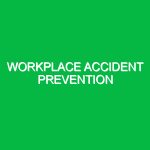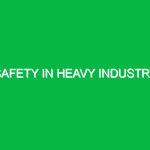Introduction
In the realm of Health, Safety, and Environment (HSE), one cannot overstate the importance of having robust safety procedures in place for chemical spills. Chemical spills can occur in various settings, from industrial facilities to laboratories, and their implications can be catastrophic. The relevance of safety procedures is underscored by the potential for environmental damage, health risks to employees, and legal repercussions for organizations. This article delves deeply into the necessary safety procedures for chemical spills, ensuring that readers are well-equipped to handle such situations effectively.
Understanding Chemical Spills
A chemical spill involves the unintended release of hazardous substances into the environment. These spills can occur due to various reasons—equipment failure, human error, or natural disasters. The consequences of such spills can range from minor inconveniences to severe health and environmental hazards. It’s crucial to have established protocols to manage spills promptly and efficiently.
Potential Hazards and Risks
Recognizing the potential hazards associated with chemical spills is the first step in effective management. Here are some common risks:
1. Health Risks
Exposure to hazardous chemicals can lead to acute and chronic health issues. For example, inhalation of toxic fumes can result in respiratory problems, skin contact with corrosive substances can cause burns, and ingestion can lead to poisoning. The severity of health risks often depends on the type and quantity of chemical involved.
2. Environmental Risks
Chemicals can contaminate soil and water sources, leading to long-term ecological damage. For instance, oil spills can devastate marine life and disrupt local ecosystems. Biodiversity loss is often irreversible and affects not just wildlife but also human communities relying on these natural resources.
3. Fire and Explosion Risks
Certain chemicals are flammable or reactive, posing risks of fires or explosions during spills. For instance, spilling gasoline or solvents can create hazardous conditions that endanger lives and property. The infamous 1984 Bhopal disaster serves as a tragic reminder of what can happen when safety protocols are ignored.
4. Legal and Financial Risks
Organizations face significant legal and financial repercussions if they fail to manage chemical spills appropriately. Regulatory bodies impose heavy fines, and companies may also face lawsuits from affected parties. In some cases, the financial burden of cleanup can be astronomical.
Safety Precautions and Best Practices
To mitigate the risks associated with chemical spills, it is vital to implement safety precautions and best practices. Below are some actionable recommendations:
1. Training and Awareness
Regular training sessions should be conducted to ensure employees are aware of the procedures to follow in the event of a chemical spill. This includes understanding the types of chemicals they may encounter, recognizing the signs of a spill, and knowing the proper response protocols.
2. Personal Protective Equipment (PPE)
Employers must provide appropriate PPE, including gloves, goggles, respirators, and protective clothing. It is essential for employees to wear the right equipment based on the specific hazards associated with the chemicals they handle. For example, when dealing with corrosive materials, acid-resistant gloves and face shields are critical.
3. Spill Kits and Resources
Having spill kits readily available is crucial. These kits should contain absorbent materials, neutralizing agents, containment booms, and disposal bags. Regular checks and replenishment of these kits will ensure they are always ready for use. Each facility should customize spill kits according to the types of chemicals handled.
4. Clear Communication Protocols
Establishing clear communication channels is vital during a spill incident. Employees should know who to contact in an emergency. Consider using a hierarchy where supervisors are the first point of contact, followed by emergency services if needed. A simple but effective communication tree can streamline response efforts.
5. Incident Reporting
After a spill occurs, documenting the incident is essential for both internal review and regulatory compliance. Reports should include details of the chemical involved, the circumstances of the spill, actions taken, and recommendations for preventing future incidents. This process not only helps in learning from mistakes but also demonstrates compliance with safety regulations.
Regulations and Standards
Navigating the regulatory landscape surrounding chemical spills is complex but necessary. Various organizations and standards govern spill management, including:
1. Occupational Safety and Health Administration (OSHA)
OSHA sets forth regulations that require employers to maintain a safe workplace, which includes managing hazardous chemicals. The Hazard Communication Standard (HCS) mandates that employers inform employees about chemical hazards through labeling and Safety Data Sheets (SDS).
2. Environmental Protection Agency (EPA)
The EPA oversees regulations concerning the discharge of pollutants into the environment. The Clean Water Act and the Resource Conservation and Recovery Act (RCRA) are two key pieces of legislation that manage environmental risks associated with chemical spills.
3. State and Local Regulations
In addition to federal regulations, state and local authorities may impose additional requirements that must be adhered to. Organizations must stay informed about these regulations to ensure compliance.
Real-Life Examples and Lessons Learned
The importance of effective safety procedures for chemical spills cannot be overstated. Consider the case of a manufacturing plant that experienced a significant spill of hydrochloric acid due to a faulty valve. The spill led to an evacuation and significant cleanup efforts, costing the company thousands of dollars. More importantly, it resulted in health issues for several employees who were exposed before the situation was contained.
This incident prompted the company to reevaluate its safety procedures. They implemented more rigorous training programs, invested in better equipment, and established a more comprehensive emergency response plan. The outcome? A safer work environment and a significant reduction in spill-related incidents.
Conclusion
Safety procedures for chemical spills are not just guidelines; they are essential protocols that protect lives and the environment. By understanding the risks, implementing effective safety measures, and adhering to regulatory standards, organizations can significantly reduce the likelihood and impact of chemical spills. Continuous training, proper equipment, and clear communication are key components in this ongoing effort.
In the end, cultivating a culture of safety is not just about compliance; it’s about ensuring that every individual returns home safely at the end of the day. As we navigate the complexities of handling chemicals, let us prioritize safety—not just as a responsibility but as a fundamental value.


